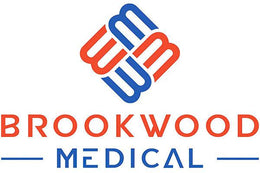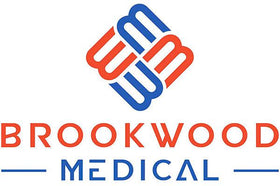Your Ultimate Guide to Understanding Regulations Surrounding Face Masks

In a world that has dramatically changed in recent years, understanding the regulations surrounding face masks has become increasingly important. As we navigate ongoing public health issues, staying informed about the various guidelines and requirements is essential for both consumers and businesses alike. This comprehensive guide aims to demystify the landscape of face mask regulations, focusing on their significance, the types of masks available, and the key factors to consider in choosing the right protection, including the crucial role of disposable mask filters.
The Importance of Face Masks in Public Health
Face masks have emerged as a vital tool in controlling the spread of infectious diseases, particularly respiratory viruses like COVID-19. The use of masks not only protects the wearer but also reduces the risk of transmission to others, making them a cornerstone of public health strategies worldwide. Understanding the regulations surrounding face masks can empower individuals and businesses to effectively contribute to community health efforts.
A Brief History of Face Mask Regulations
Face mask regulations have evolved significantly over time, especially in response to global health crises. The following points outline key developments in this area:
- Pre-2020: Mask use was primarily reserved for healthcare settings, with recommendations varying by region and situation.
- March 2020: The World Health Organization (WHO) and Centers for Disease Control and Prevention (CDC) began to recommend the use of masks in public settings.
- 2020-2021: Many countries instituted mandatory mask mandates in response to rising infection rates.
- 2022-Present: As vaccination rates increased, some regions relaxed mask mandates, while others maintained guidelines based on local transmission rates.
Key Types of Face Masks
Different types of face masks exist, each offering varying levels of protection according to their design and material composition. Below are the primary categories of face masks:
Cloth Masks
Cloth masks became a popular choice for everyday use due to their availability and customizable designs. While they provide some level of protection, it's important to note that their effectiveness largely depends on fabric type, layers, and fit. To enhance their efficacy, users can integrate disposable mask filters into cloth masks, thereby improving filtration efficiency.
Surgical Masks
Surgical masks are designed primarily for healthcare professionals, offering a higher level of protection than cloth masks. These masks are disposable and made of multiple layers of fabric to filter out large respiratory droplets. Surgical masks generally do not require additional filters, but they may not fit as snugly as other options.
N95 Respirators
N95 respirators provide a superior level of filtration, blocking at least 95% of airborne particles. They are recommended for frontline healthcare workers and individuals in high-risk environments. Although they are highly effective, proper fit testing is essential, ensuring that the mask seals effectively around the wearer’s face.
Understanding the Regulations
Regulations surrounding face masks vary globally based on local health guidelines and government mandates.
United States Regulations
In the United States, recommendations from health authorities are pivotal for mask use regulations. The CDC has provided guidance on when and where to wear masks, particularly in indoor settings where physical distancing is challenging. Moreover, the FDA has regulations regarding the manufacturing and marketing of face masks, including requirements for medical-grade masks.
International Regulations
Internationally, regulations differ widely. Countries like Canada and those in the European Union have their own guidelines reflecting the local transmission of viruses. For instance, some nations require travelers to wear specific types of masks on public transport.
Choosing the Right Mask: Key Considerations
When selecting a face mask, there are several factors to consider to ensure effective protection:
Filtration Efficiency
Filtration efficiency is crucial for any mask. Masks that utilize disposable mask filters can significantly enhance the level of protection, especially in cloth masks that do not inherently offer high filtration rates. Check for masks that mention their filtration capabilities or come with filters in their design.
Comfort and Fit
A well-fitting mask promotes comfort and ensures the highest level of effectiveness. Look for adjustable ear loops, nose bridges for a snug fit, and breathable materials to aid in prolonged wear.
Material Quality
The material of the mask influences both comfort and filtration. Masks made from multiple layers of fabric can improve filtration. Consider finding masks that accommodate disposable mask filters for the highest level of safety.
Where Do Disposable Mask Filters Fit In?
While many masks provide an adequate barrier against droplets, integrating disposable mask filters can significantly boost their efficacy. Here's why they matter:
- Increased Filtration: Disposable mask filters are designed to trap smaller particles that cloth or surgical masks might miss.
- Versatility: Many cloth masks are compatible with filters, allowing users to upgrade their protection without purchasing a new mask.
- Ease of Use: Filters are typically lightweight and easily replaceable, adding convenience to mask usage.
The Future of Face Mask Regulations
The landscape of face mask regulations is likely to continue evolving in response to public health data and scientific research. As such, it's essential to stay informed about updates from trusted health organizations.
Staying Informed
To navigate this changing environment, individuals can:
- Follow guidelines from local health authorities.
- Partake in community discussions regarding public health measures.
- Remain engaged with updates from the WHO and CDC.
Advocacy and Education
Advocacy groups are crucial in shaping public understanding of mask regulations. Supporting initiatives that promote health education will empower people to make informed choices about mask usage.
The Road Ahead: What Lies in the Future of Mask Usage
As we move forward, it's clear that face masks will continue to play a significant role in public health. Whether due to pandemics, seasonal flu outbreaks, or air pollution concerns, the use of face masks—especially when enhanced with disposable mask filters—will likely remain a staple for preventing disease transmission and safeguarding community health.
Ultimately, staying abreast of regulations and best practices surrounding face masks enables individuals to protect themselves and others effectively. As mask technology evolves, adapting our knowledge and practices will ensure the safety of our communities. Embracing a culture of conscious mask use is not just a personal responsibility but also a testament to our collective commitment to health and safety.
Discover the creations of a fellow Shopify store owner by exploring their online store. Simply click here to access the store. Please remember that this is a promotional link, and we cannot be held responsible for the content of the linked store.






